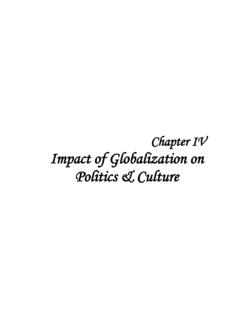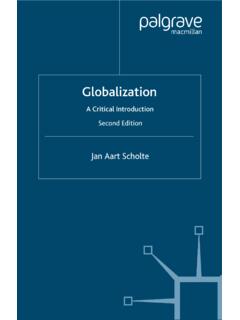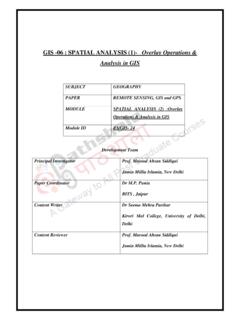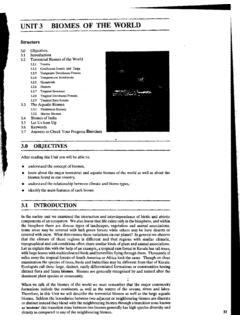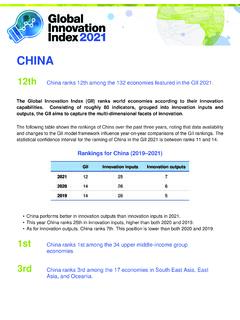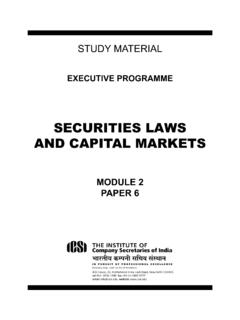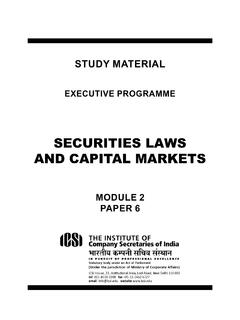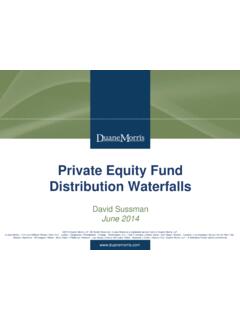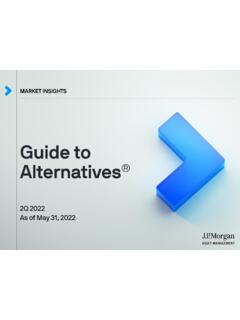Transcription of MCQ - Aditi Mahavidyalaya
1 MCQ 1 Who controls the capital market in India? (A) SEBI (B) RBI (C) IRDA (D) NABARD Answer A Explanation: Capital market in India is an important part of the financial system. The Indian Securities and Exchange Board (SEBI) regulates the capital market in India. 2 Which of the following reasons is not responsible for the ups and downs in the Sensex? (A) Rain (B) Monetary policy (C) Political instability (D) None of the following Answer D Explanation: None of the following because every factor given in the option is attributed for ups and downs in the SENSEX. 3 How many companies are included in the SENSEX of India? (A) 30 (B) 50 (C) 111 (D) 25 Answer A Explanation: The index of the Bombay Stock Exchange counts the fluctuation in the share prices of 30 companies. 4 Which of the following is not a credit rating agency?
2 (A) CRISIL (B) ICRA (C) NIKKEI (D) CARE Answer C Explanation: NIKKEI is stock exchange of Japan. of the following TERM does not belong to the stock exchange? (A) NAV (B) NSE (C) IPO (D) KPO Answer D Explanation: The KPO's full form is Knowledge Process Outsourcing. There is no direct link to the stock market. 6 Which of the following might be a reason for a stock market to lose value suddenly? A A big company going bankrupt B Fear of a global recession C A terrorist attack D All of these 7 What is SP-500? A A crop of wheat B The name of Mumbai-based office of SEBI C A stock exchange of USA D A scheme announced by the Government of India 8 Which of the following words does not belong to the stock exchange? A KPO B NAV C NSE D IPO 9 Which of the following cities does NOT have a formal stock exchange? A Frankfurt B London C Monte Carlo D Hong Kong 10 Which term most accurately describes selling shares at a higher price than the price at which they were bought?
3 A Loss B Profit C Asset D Dividend 11 Which of the following are you unlikely to find traded officially on world stock markets? A Foreign Currency B Insults C Company stock/shares D Gold 12 The FTSE 100 index is used to measure stock market performance in which country? A France B Germany C Finland D United Kingdom 13 How many companies are included in the SENSEX? A 50 B 111 C 30 D None 14 Which of the following is responsible for the fluctuations in the Sensex? A Political instability B Monetary policy C Rain D All of the above 15 When was Nifty established? A 1996 B 1952 C 1965 D None of these 16 Which of the following might you see roaming a stock market? A Goats B Bulls C Cows D Mice 17 India index Services & Products Limited (IISL) is a joint venture between two entities- A NSE and CRISIL Ltd. B BSE and CARE Ltd.
4 C BSE and CRISIL Ltd. D NSE and ICRA Ltd. 18 A contract between a buyer and a seller entered into today regarding a transaction to be fulfilled at a future point in time is called A Fixed contract B Derivative contract C Forward contract D Future contract 19 Over the life of the derivative contract, the value of the derivative A fluctuates with the price of the so-called underlying of the contract B decreases C increases D None of these 20 In India, NIFTY and SENSEX are calculated on the basis of A. Market Capitalization B. Paid up Capital C. Free-float Capitalization D. Authorized Share Capital 21 The first computerised online stock exchange in India was A. NSE B. OTCEI C. BSE D. MCX 22 Which of the following derivative is not traded on Indian Stock Market? A. index Options B. Stock Futures C. index Futures D.
5 Forward Rate Agreements 23 Spot exchange rate is the rate of exchange between two currencies A. for immediate delivery B. for future delivery C. for delivery at a particular spot in future D. None of the above 24 Break-even of a Put option occurs when spot price is equal to A. Strike price + Premium B. Strike Price - Premium C. Premium D. None of the above 25 Before expiry date, the time value of a call option is A. Strike Price - Spot Price B. Spot Price - Strike Price C. Market Premium - Intrinsic Value D. Intrinsic Value 26 If Strike price is more than the spot price of the asset, the call option is known as A. American Option B. European Option C. Out of Money Option D. In the Money Option 27 Which of the following is not available in India? A. index Options B. index Futures C. Commodity Options D. Commodity Futures 28 Mr.
6 X has to pay Rs 5,00,000 in three months time for the imports made by him. Correct hedging policy for him would be to A. Buy a Rs Call Option B. Sell a Rs Call Option C. Buy a Rs Put Option D. Sell a Rs Put Option 29 Which of the following is true for mutual funds in India? A. Exit load is not allowed B. Entry load is allowed C. Entry load is not allowed D. Exit load allowed is some cases 30 If the spot rate of $ in Mumbai is Rs. and 1 month forward rate is Rs. , then which is correct for forward market? A. That $ is at premium B. That $ is at discount C. Rupee is at premium D. None of the above 31 Forward exchange rate is the rate of exchange between two currencies A. prevailing today for future delivery B. would prevail at a future date C. prevailing today for immediate delivery D. None of the above 32 Which of the following is the benefit of Depositories?
7 A. Reduction in the share transfer time to the buyer B. Reduced Risk of stolen, fake, forged shares C. No Stamp duty on transfer of shares in dematerialized form D. All of the above 33 Which of the following is working as demutualized stock exchange since from beginning? A. NSE B. BSE C. DSE D. All of the above 34 In primary markets, the property of shares which made it easy to sell newly issued security is considered as A. increased liquidity B. decreased liquidity C. money flow D. large funds 35 The money market where debt and stocks are traded and maturity period is more than a year is classified as A. shorter term markets B. capital markets C. counter markets D. long-term markets 36 The type of market in which securities with less than one year maturity are traded, is classified as A. money market B. capital market C.
8 Transaction market D. global market 37 In capital markets, the major suppliers of trading instruments are A. government and corporations B. liquid corporations C. instrumental corporations D. manufacturing corporations 38: The markets in which transactions are done through computers and telephone without any specific location are classified as A. past counter market B. future counter market C. over the counter markets D. capital counter market 39: The markets in which new securities are issued by the corporations to raise funds are called A. primary markets B. secondary markets C. Gross markets D. proceeds markets Answer 40 The price of underlying asset is added into intrinsic value of option to calculate A. forward price of option B. exercise price of option C. book value of option D. spot price of option Answer 41 The type of exchange members who only buy and sell for their personal account are classified as A.
9 Non-investment traders B. professional traders C. commercial traders D. investment traders er 42 The financial institutions having loans swapped for bonds can sell all the bonds in A. under-developed markets B. developed markets C. primary markets D. secondary markets 43 The Securities and Exchange Board of India was not entrusted with the function of A. Investor protection B. Ensuring fair practices by companies C. Promotion of efficient services by brokers D. Improving the earning of equity holders 44 To regulate scam in Indian capital market, which of the following body has regulatory power: a) SEBI b) RBI c) SBI d) None of these Ans: A 45 Which trading individuals has SEBI decided to grant a unified license to operate in commodity derivative and equity markets? a. Clearing Members b. Brokers c. NBFCs d.
10 Only a and b e. All the above 46) What is the latest amendment to the FPI regulations by capital and commodities market regulator SEBI? a. Barring Indians, NRIs and entities beneficially owned by NRIs from trading b. Barring Indians, NRIs, and entities beneficially owned by NRIs from being owners of participatory notes c. Barring Indians and NRIs from FDI in India d. None of the above 47 SEBI has allowed celebs to endorse which products? a. Stocks and shares b. Mutual funds c. Dividends d. Insurance 48 SEBI announced plans to tighten regulations for which type of trading? a. Spot trading b. Investor trading c. Algorithmic trading d. None of the above ANSWER: Algorithmic trading Explanation: The Securities and Exchange Board of India (SEBI) plans to further tighten the regulations for algorithmic aims to minimise instances of misuse of such systems that can be used to execute complex trading strategies at a very high speed.
